DOWNLOAD WHITE PAPER |
Customers moving to a hosting provider or cloud provider are often confused about PCI DSS compliance regulations, and what their responsibilities are in that environment. Some companies feel that they can avoid compliance concerns by moving to a cloud service. Some feel that they are no longer under compliance regulations at all in that environment. I heard this comment just this week:
“I don’t need to worry about compliance because my hosting provider says they are PCI compliant.”
This is dangerously wrong. Let’s sort this out.
First, hosting providers who say they are PCI compliant are usually talking about their own systems, not about yours. Their credit card payment application is PCI compliant, they run the required vulnerability assessments on their payment processing applications, they collect system logs, and so forth. All of these things are required by the hosting or cloud provider for their own systems to be PCI compliant. They aren’t talking about your applications and data.
This does not make you automatically PCI compliant when you use their platforms or applications. You still bear the responsibility for meeting PCI compliance in your applications. Regardless of the hosting or cloud implementation (Infrastructure-as-a-Service, Platform-as-a-Service, Software-as-a-Service, or a hybrid approach), you are always responsible for PCI compliance of your data.
What does the PCI Security Standards Council (PCI SSC) say about cloud environment?
The hosted entity (you) should be fully aware of any and all aspects of the cloud service, including specific system components and security controls, which are not covered by the provider and are therefore the entity’s responsibility to manage and assess.
And,
These challenges may make it impossible for some cloud-based services to operate in a PCI DSS compliant manner. Consequently, the burden for providing proof of PCI DSS compliance for a cloud-based service falls heavily on the cloud provider, and such proof should be accepted (by you) only based on rigorous evidence of adequate controls.
As with all hosted services in scope for PCI DSS, the hosted entity (you) should request sufficient assurance from their cloud provider that the scope of the provider’s PCI DSS review is sufficient, and that all controls relevant to the hosted entity’s environment have been assessed and determined to be PCI DSS compliant.
Simply put, you are responsible for understanding which parts of PCI compliance a cloud vendor can help you with, and which parts they can’t.
There is no cloud implementation that relieves you of the responsibility of protecting your data. See section 4.3 in this PCI guidance.
What does this mean from a practical point of view?
This means that you must meet all of the PCI DSS requirements for your cloud implementation. You may be able to take advantage of some PCI compliant services provided by the hosting or cloud vendor, but you must have the cloud vendor provide you with guidance, documentation, and certification. You are not off the hook for responsibility in these areas.
Please note the chart on page 23 of the PCI cloud guidance. There is no hosting or cloud implementation that covers your data. You are always responsible for protecting your customer’s cardholder data. This means complying with PCI DSS Section 3 requirements to encrypt the data and protect the encryption keys.
There is no magic bullet. You have to do this work.
Living through a data breach is no fun, and I would not wish this experience on anyone. In hosted and cloud environments, ignorance is not bliss.
Stay safe. For more information, download our whitepaper Meet the Challenges of PCI Compliance and learn more about protecting sensitive data to meet PCI compliance requirements.
Patrick


 The loss of passwords by LinkedIn, eHarmony, and Last.FM should be a wakeup call for CIOs, security auditors, and IT security professionals everywhere. Let’s take a look at what probably happened, what you can do, and why you need to look beyond passwords on your own systems.
The loss of passwords by LinkedIn, eHarmony, and Last.FM should be a wakeup call for CIOs, security auditors, and IT security professionals everywhere. Let’s take a look at what probably happened, what you can do, and why you need to look beyond passwords on your own systems.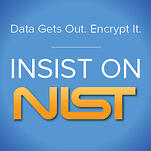 If you use a hash method to protect sensitive data, you should use a NIST-certified software library. Why? Because it is terribly easy to make mistakes in the software implementation of a SHA hash method. NIST certification is not a guarantee, but in my mind it is a minimum requirement that you should expect. I find it curious that most people would not consider buying a used car without a CARFAX report, but completely ignore NIST certification when deploying hash software to protect sensitive data. A lot more is at stake, and you don’t even have to pay to verify certification!
If you use a hash method to protect sensitive data, you should use a NIST-certified software library. Why? Because it is terribly easy to make mistakes in the software implementation of a SHA hash method. NIST certification is not a guarantee, but in my mind it is a minimum requirement that you should expect. I find it curious that most people would not consider buying a used car without a CARFAX report, but completely ignore NIST certification when deploying hash software to protect sensitive data. A lot more is at stake, and you don’t even have to pay to verify certification!
 Really successful technology partnerships are hard to achieve and therefore are rare. There are so many potential pitfalls in this type of partnership that include conflicting goals, changing market conditions, and on and on. That’s why I am particularly pleased with our partnership with Symantec on the IBM Enterprise platform versions of PGP encryption. This technology partnership now spans more than a decade and several mergers and acquisitions. The level of trust and integration between Townsend Security and Symantec has just gotten better over time, and our IBM i (AS/400, iSeries) customers and IBM System z Mainframe customers have benefited.
Really successful technology partnerships are hard to achieve and therefore are rare. There are so many potential pitfalls in this type of partnership that include conflicting goals, changing market conditions, and on and on. That’s why I am particularly pleased with our partnership with Symantec on the IBM Enterprise platform versions of PGP encryption. This technology partnership now spans more than a decade and several mergers and acquisitions. The level of trust and integration between Townsend Security and Symantec has just gotten better over time, and our IBM i (AS/400, iSeries) customers and IBM System z Mainframe customers have benefited. IBM System z customers will be glad to know that we’ve partnered with
IBM System z customers will be glad to know that we’ve partnered with 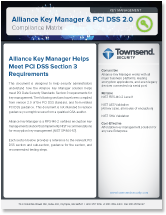

 We’ve had an upsurge in interest recently in our
We’ve had an upsurge in interest recently in our 

 Some years ago, during an “in between” period of my life, I drove a taxi in Houston, Texas. It was one of those enriching life experiences (this means it left scars), and a recent security newsletter from Bruce Schneier had me thinking about it again.
Some years ago, during an “in between” period of my life, I drove a taxi in Houston, Texas. It was one of those enriching life experiences (this means it left scars), and a recent security newsletter from Bruce Schneier had me thinking about it again.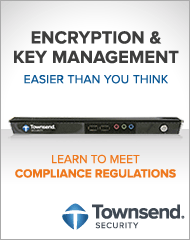

 This is what a Database Administrator said to me recently when I attended a SQL Saturday event on the Microsoft campus in Redmond, Washington. And I’m hearing that a lot from IT directors and CIOs in the financial and medical sectors. Microsoft SharePoint is a wonderful collaboration tool, and it supports a number of versions and deployment options. These options run the gamut from free versions that ship with Windows Server, to versions tailored to the Microsoft Office suite of applications, to web portals. And an industry has grown up around installing, customizing, and hosting SharePoint.
This is what a Database Administrator said to me recently when I attended a SQL Saturday event on the Microsoft campus in Redmond, Washington. And I’m hearing that a lot from IT directors and CIOs in the financial and medical sectors. Microsoft SharePoint is a wonderful collaboration tool, and it supports a number of versions and deployment options. These options run the gamut from free versions that ship with Windows Server, to versions tailored to the Microsoft Office suite of applications, to web portals. And an industry has grown up around installing, customizing, and hosting SharePoint.
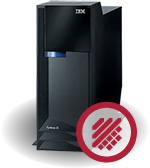 Everyone in the IBM i (AS/400, iSeries) world with responsibility for these large servers knows that IBM will soon announce the next release of the IBM i operating system, and that version V5R4 will go off of support a short time after that. While the date of the next release and the sunset date for V5R4 have not been announced, IBM has a fairly predictable pattern of new OS releases and support schedule. You can read Timothy Pickett Morgan’s thoughts in an article he wrote titled "
Everyone in the IBM i (AS/400, iSeries) world with responsibility for these large servers knows that IBM will soon announce the next release of the IBM i operating system, and that version V5R4 will go off of support a short time after that. While the date of the next release and the sunset date for V5R4 have not been announced, IBM has a fairly predictable pattern of new OS releases and support schedule. You can read Timothy Pickett Morgan’s thoughts in an article he wrote titled "
 The last few days has seen a number of new reports about a security vulnerability in RSA public/private keys in use on the Internet. The vulnerability has to do with duplicate keys, and not with any weakness in the cryptographic algorithm itself. But it is disturbing information because public/private key encryption is crucial to the security of web sites and a number of other secure applications and services.
The last few days has seen a number of new reports about a security vulnerability in RSA public/private keys in use on the Internet. The vulnerability has to do with duplicate keys, and not with any weakness in the cryptographic algorithm itself. But it is disturbing information because public/private key encryption is crucial to the security of web sites and a number of other secure applications and services.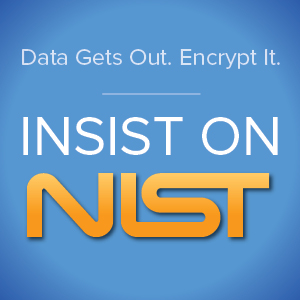 NIST also has a certification program for random number generators and vendors like us can submit our work to independent labs that perform NIST testing. All of our cryptographic solutions have been through this testing. It is also important to note that encryption key management systems that undergo FIPS 140-2 certification also go through full RNG testing. Our
NIST also has a certification program for random number generators and vendors like us can submit our work to independent labs that perform NIST testing. All of our cryptographic solutions have been through this testing. It is also important to note that encryption key management systems that undergo FIPS 140-2 certification also go through full RNG testing. Our 